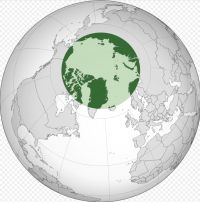 We recently crossed the Arctic Circle on a Norwegian voyage on the Hurtigruten MS Trollfjord. The crossing brought to mind the question — who first devised this imaginary line at 66° 34′ N latitude? My first guess would have been the early Norse settlers in Scandinavia, which is wholly the wrong answer. The right answer, apparently, was the ancient Greeks.
We recently crossed the Arctic Circle on a Norwegian voyage on the Hurtigruten MS Trollfjord. The crossing brought to mind the question — who first devised this imaginary line at 66° 34′ N latitude? My first guess would have been the early Norse settlers in Scandinavia, which is wholly the wrong answer. The right answer, apparently, was the ancient Greeks.
Norwegian explorer and diplomat Fridtjof Nansen explains in his book, In Northern Mists; Arctic Exploration in Early Times.
Long before people knew whether there were lands and seas far in the north, those who studied the stars had observed that there were some bodies in the northern sky which never set, and that there was a point in the vault of heaven which never changed its place. In time, they also found that, as they moved northwards, the circle surrounding the stars that were always visible became larger, and they saw that these in their daily movements described orbits about the fixed point or pole of the heavens. The ancient Chaldeans had already found this out.
From this observation it was but a short step to the deduction that the earth could not be flat, as the popular idea made it, but must in one way or another be spherical, and that if one went far enough to the north, these stars would be right over one’s head. To the Greeks a circle drawn through the constellation of the Great Bear, which they called “Arktos,” formed the limit of the stars that were always visible. This limit was therefore called the Bear’s circle, or the “Arctic Circle,” and thus this designation for the northernmost regions of the earth is derived from the sky.
The Arctic Circle was defined more precisely in the 1500s, but the original idea was developed by the Greeks sometime before 300 BCE.
